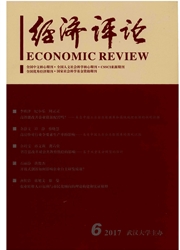

 中文摘要:
中文摘要:
本文以产业集聚的环境外部性为切入点,利用2003—2012年中国279个地级市的面板数据,在区分专业化和多样化集聚的基础上,通过构建线性计量模型和面板门限模型,进一步从产业集聚动态演化的视角考察了集聚发展阶段变迁对污染减排的差异化影响。线性模型的结果表明,基于环境保护的角度,多样化集聚的发展模式优于专业化集聚。面板门限回归模型的结果显示,专业化集聚对环境污染产生了先抑制后促进的作用,两者之间呈现一种“U”型关系:多样化集聚的面板门限模型具有3个门限值,表明技术创新、专业的环保产业、闭合的物质循环系统,以及“拥塞效应”、路径依赖和结构僵化等因素的交替作用,使多样化集聚与污染减排的关系更为复杂。
 英文摘要:
英文摘要:
Based on the perspective of environmental externality of industrial agglomeration, by distinguishing industrial agglomeration into two types, specialization and diversification, this paper uses the panel data of China' s 279 prefecture-level cities from 2003 to 2012 and analyzes the heterogeneous impact of evolution of agglomeration on pollution abatement. The findings from linear model are in favor of diversification in line with the purpose of environmental protection. Furthermore, empirical results driven from the threshold panel data model show that the relationship between specialization and pollution is U-shaped. When comes to diversification, the model has three thresholds, which indicates that samples have been divided into four groups. It indicates that joint effects among factors of innovation, development of environmental protection industry, material recycle system, congestion effect and structural stiffening make the relationship between diversification and pollution far more complicated.
 同期刊论文项目
同期刊论文项目
 同项目期刊论文
同项目期刊论文
 期刊信息
期刊信息
